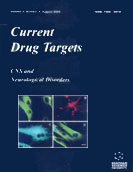Abstract
Cannabinoids, such as the Δ9- tetrahydrocannabinol (THC), present in the cannabis plant, as well as anandamide and 2-arachidonoyl glycerol, produced by the mammalian body, have been shown to protect the brain from various insults and to improve several neurodegenerative diseases. The current review summarizes the evidence for cannabinoid neuroprotection in vivo, and refers to recent in vitro studies, which help elucidate possible molecular mechanisms underlying this protective effect. Some of these mechanisms involve the activation of CB1 and CB2 cannabinoid receptors, while others are not dependent on them. In some cases, protection is due to a direct effect of the cannabinoids on neuronal cells, while in others, it results from their effects on non-neuronal elements within the brain. In many experimental set-ups, cannabinoid neurotoxicity, particularly by THC, resides side by side with neuroprotection. The current review attempts to shed light on this dual activity, and to dissociate between the two contradictory effects.
Keywords: ANANDAMIDE, glutamatergic synaptic transmission, neuroinflammation, anti-oxidative action, Parkinson's Disease, ischemia, Alzheimer's Disease, Multiple Sclerosis, neuronal damage
 10
10

















